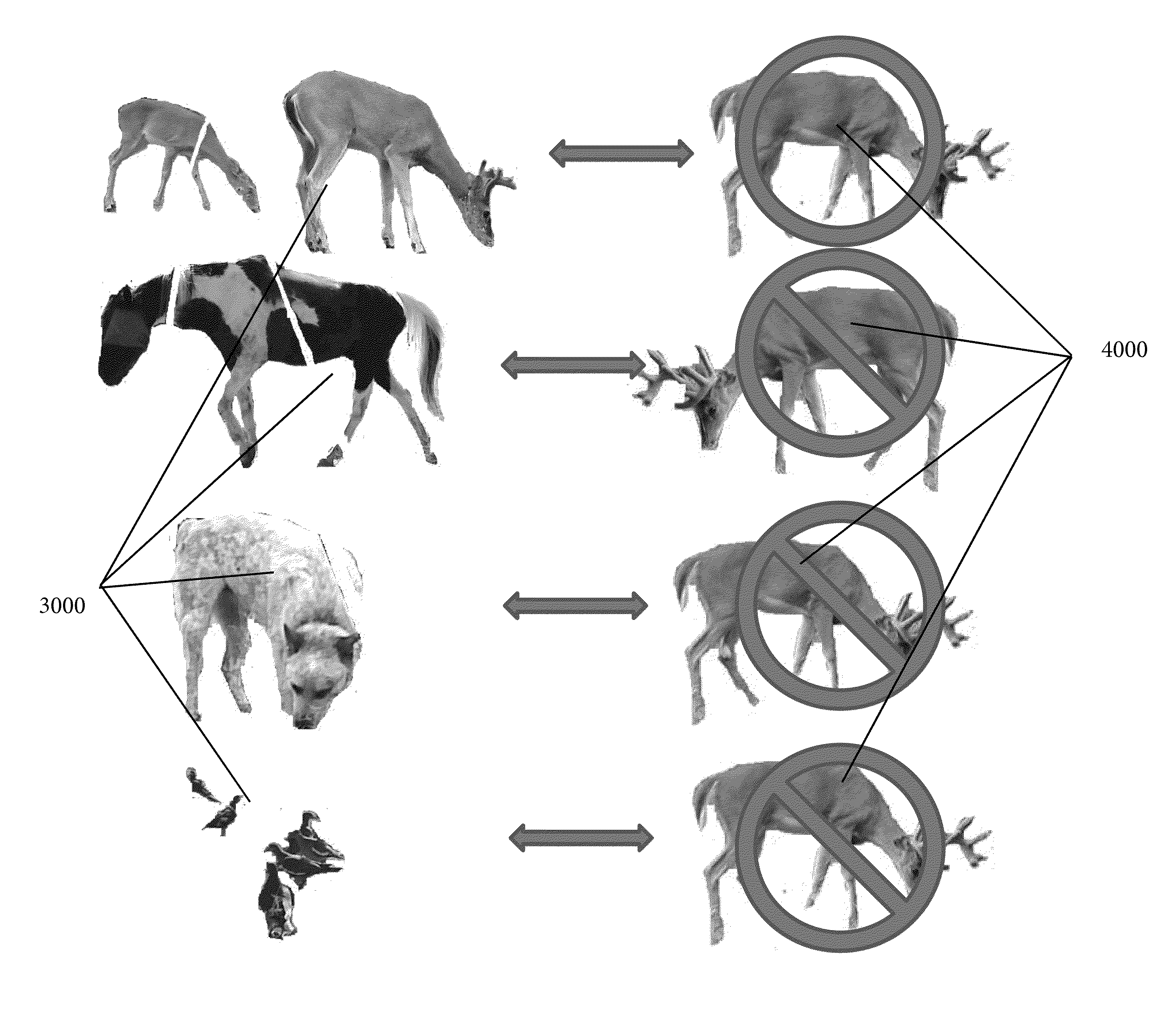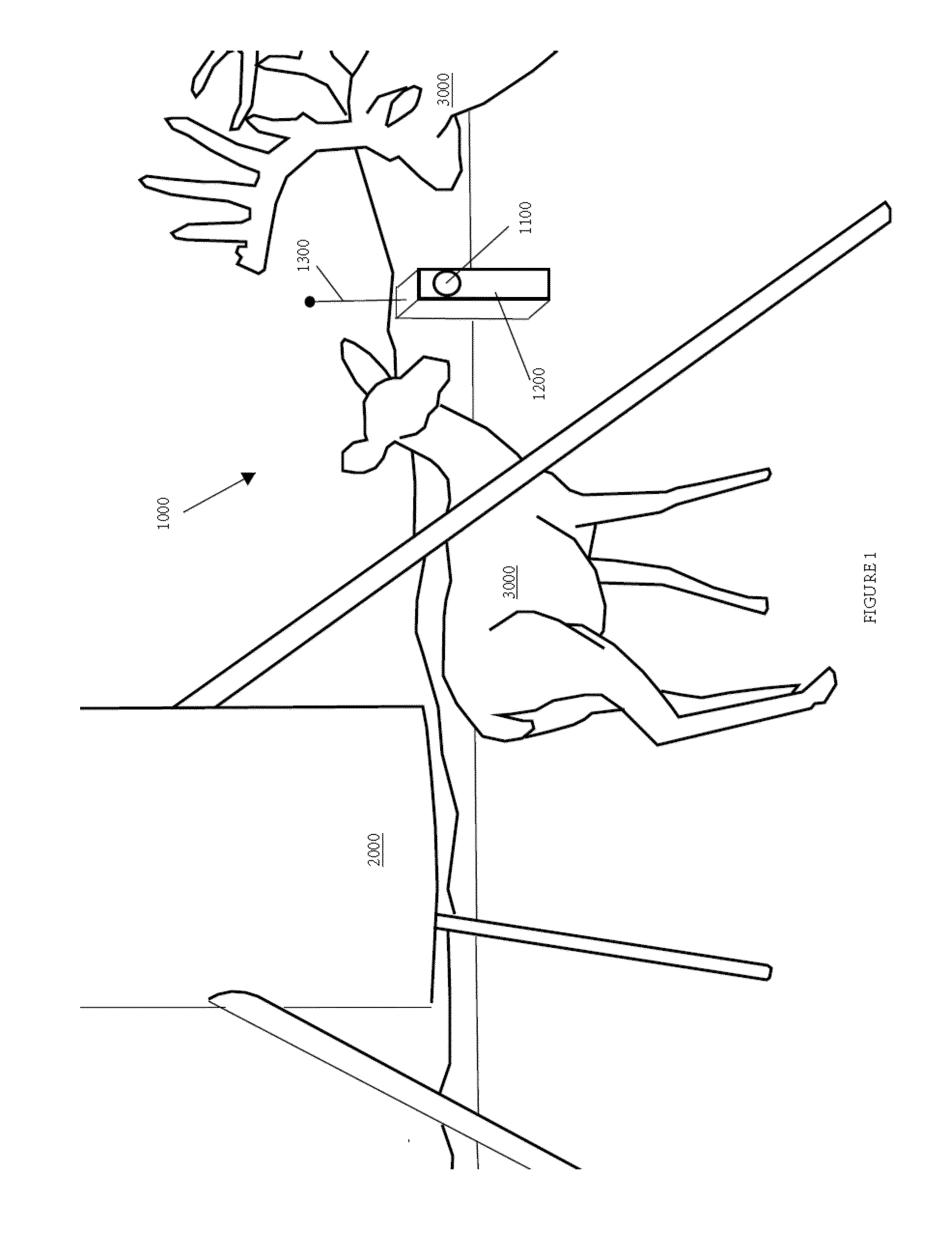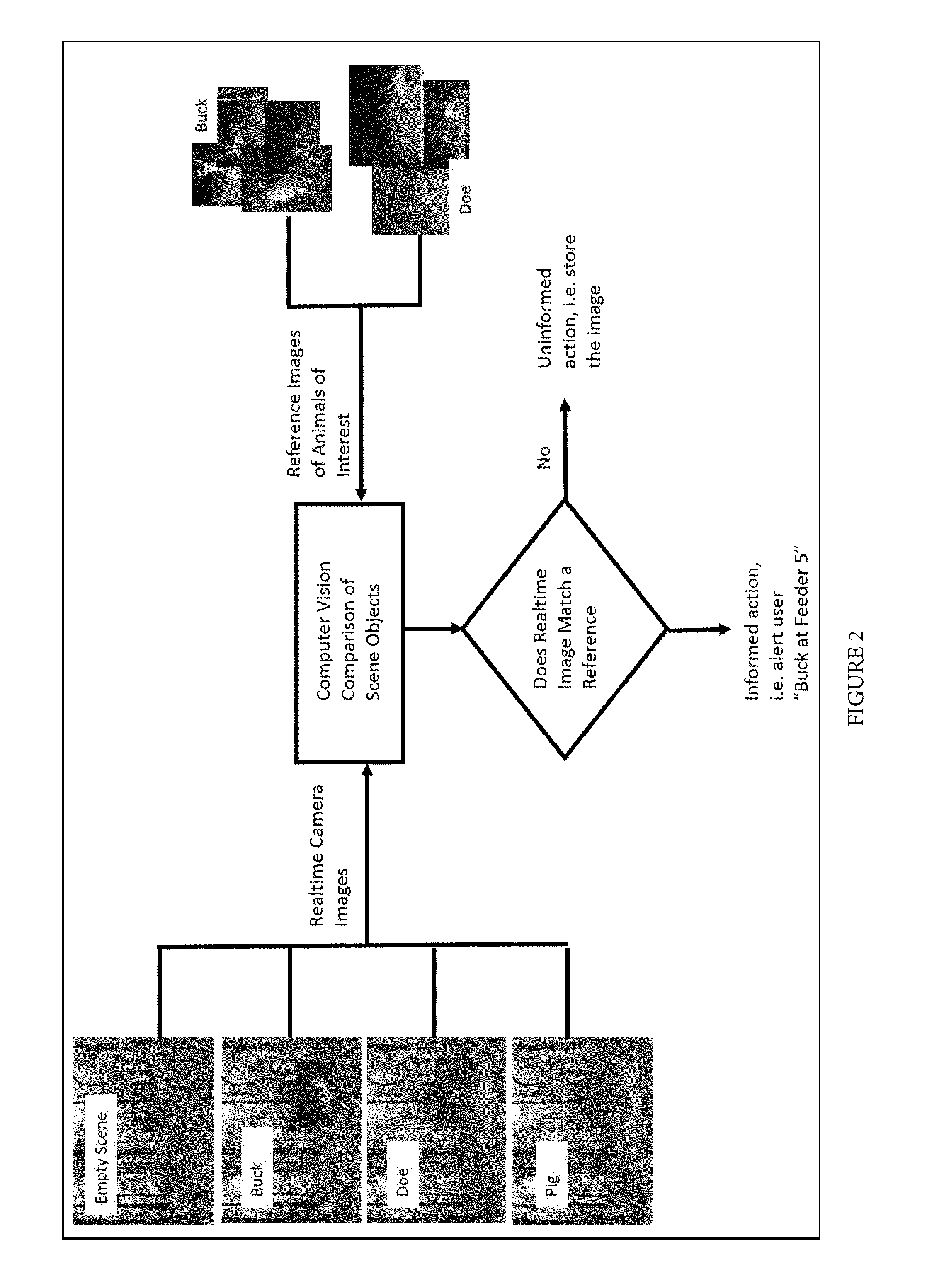Alerting system for automatically detecting, categorizing, and locating animals using computer aided image comparisons
a technology of automatic detection and classification, applied in the field of systems and equipment, can solve the problems of delayed alerts of animal activities, time-consuming and labor-intensive review of camera images or videos in real-time, and inability to monitor cameras
- Summary
- Abstract
- Description
- Claims
- Application Information
AI Technical Summary
Benefits of technology
Problems solved by technology
Method used
Image
Examples
example 1
Distinguishing a Doe v. Buck
[0029]In one example of a typical use, the system may be used to alert a hunter to the presence of a buck, but not does, in a particular area of interest. First, the camera, microprocessor, and wireless communication device can be established in the area of interest. Second, a static image of the area of interest may be loaded into or learned by the microprocessor. Next, reference images of bucks and does can be loaded into the microprocessor. After setup, the camera may begin sending real-time images or video to the microprocessor wherein the images are compared programmatically to the static image of the area. If incongruities exist between the static image and the real-time image, then the size, shape and color of the incongruities are programmatically compared to the size, shape, and color of the bucks and does in the reference images. When a match occurs between the incongruity and the reference images for bucks, an alert is sent to the user that a b...
example 2
Distinguishing a Buck v. Horse
[0030]In one example of a typical use, the system may be used to alert a hunter to the presence of a buck, but not horses or other farm animals, in a particular area of interest. First, the camera, microprocessor, and wireless communication device can be established in the area of interest. Second, a static image of the area of interest may be loaded into the microprocessor or learned by the system. Next, reference images of bucks and horses can be loaded into the microprocessor. After setup, the camera may begin sending real-time images or video to the microprocessor wherein the images are compared programmatically to the static image of the area. If incongruities exist between the static image and the real-time image, then the size, shape and color of the incongruities are programmatically compared to the size, shape, and color of the bucks and horses in the reference images. When a match occurs between the incongruity and the reference images for buc...
example 3
Distinguishing a Particular Prize Buck v. A Young Buck
[0031]In another example of a typical use, the system may be used to alert a hunter to the presence of a prize buck, but not young bucks, in a particular area of interest. First, the camera, microprocessor, and wireless communication device can be established in the area of interest. Second, a static image of the area of interest may be loaded into the microprocessor or learned by the system. Next, reference images of a particular prize buck and regular bucks and can be loaded into the microprocessor. After setup, the camera may begin sending real-time images or video to the microprocessor wherein the images are compared programmatically to the static image of the area. If incongruities exist between the static image and the real-time image, then the size, shape and color of the incongruities are programmatically compared to the size, shape, and color of the Prize bucks and young bucks in the reference images. When a match occurs...
PUM
 Login to View More
Login to View More Abstract
Description
Claims
Application Information
 Login to View More
Login to View More - R&D
- Intellectual Property
- Life Sciences
- Materials
- Tech Scout
- Unparalleled Data Quality
- Higher Quality Content
- 60% Fewer Hallucinations
Browse by: Latest US Patents, China's latest patents, Technical Efficacy Thesaurus, Application Domain, Technology Topic, Popular Technical Reports.
© 2025 PatSnap. All rights reserved.Legal|Privacy policy|Modern Slavery Act Transparency Statement|Sitemap|About US| Contact US: help@patsnap.com



